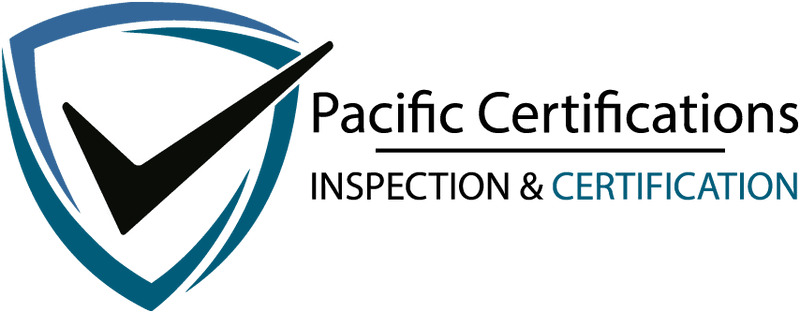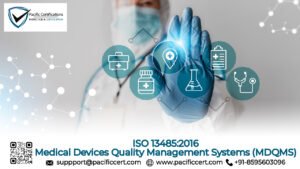
What is ISO 16232:2018 – Road vehicles?
ISO 16232:2018-Road vehicles-Cleanliness of components and systems provides guidelines and specifications for assessing and measuring the cleanliness of various components and systems in road vehicles. The cleanliness of these components and systems is essential to ensure the proper functioning and longevity of vehicle parts and to maintain vehicle performance and safety.
The standard covers a wide range of components and systems within a vehicle, including:
- Fuel systems
- Lubrication systems
- Cooling systems
- Hydraulic systems
- Exhaust systems
- Air conditioning systems
- Brake systems
- Transmission systems
- Steering systems
- Electrical systems
- Engine components
ISO 16232:2018 specifies methods for sampling, extracting, and analyzing contaminants found in these systems and components. It outlines procedures for assessing the cleanliness level, which is typically expressed as a particle count per unit volume or mass.
Overall, this standard is important for automotive manufacturers, suppliers, and quality control personnel to ensure that the components and systems within a vehicle meet specified cleanliness requirements. By adhering to these cleanliness standards, manufacturers can help reduce the risk of component failure, improve vehicle reliability, and enhance the overall quality of their products.
What are the Requirements for ISO 16232:2018?
ISO 16232:2018 provides a set of requirements and guidelines for assessing the cleanliness of components and systems in road vehicles. These requirements cover various aspects of the sampling, extraction, and analysis of contaminants in automotive systems.
Here are some of the key requirements of ISO 16232:2018:
- Sampling Procedures:
- The standard defines sampling procedures to collect representative samples from the components and systems under evaluation.
- Sampling methods should ensure that contaminants are collected in a manner that accurately reflects their distribution within the component or system.
- Contaminant Extraction:
- ISO 16232 specifies methods for extracting contaminants from the collected samples. The extraction methods are designed to effectively remove contaminants from the surfaces of the components or systems.
- Contaminant Analysis:
- The standard provides guidance on analyzing the extracted contaminants, typically using techniques such as gravimetry, optical microscopy, or automated particle counting.
- Contaminant analysis should yield results in terms of particle count per unit volume or mass.
- Reporting and Documentation:
- ISO 16232 requires the documentation of the sampling and analysis procedures, including details of the equipment used and the results obtained.
- The standard outlines how to report the cleanliness level of the components or systems, including any applicable cleanliness classes or limits.
- Acceptance Criteria:
- Manufacturers and organizations can establish cleanliness requirements or acceptance criteria specific to their components or systems based on ISO 16232’s guidelines.
- Acceptance criteria should consider the type and criticality of the component or system being evaluated.
- Calibration and Validation:
- ISO 16232 emphasizes the need to calibrate and validate the equipment and methods used for sampling, extraction, and analysis to ensure accuracy and repeatability.
- Quality Management:
- Organizations are encouraged to integrate cleanliness assessment into their quality management systems to ensure consistency and reliability in cleanliness evaluations.
- Traceability:
- The standard emphasizes the importance of traceability in all aspects of cleanliness assessment, including sampling, extraction, and analysis.
The standard emphasizes the importance of traceability in all aspects of cleanliness assessment, including sampling, extraction, and analysis.
It’s important to note that ISO 16232:2018 provides a framework and guidelines for cleanliness assessment, but specific requirements and cleanliness levels may vary depending on the automotive manufacturer, component type, and industry standards.
What are the Benefits of ISO 16232:2018 Road vehicles?
ISO 16232:2018-Road vehicles offers several benefits to automotive manufacturers, suppliers, and quality control personnel. These benefits include:
- Improved Product Quality: By adhering to ISO 16232 cleanliness standards, manufacturers can produce cleaner components and systems. This leads to improved product quality, reduced defects, and increased customer satisfaction.
- Enhanced Component Reliability: Contaminants, such as particles and residues, can lead to component wear, corrosion, and malfunction. Clean components and systems are more reliable and have longer lifespans, reducing the need for repairs and replacements.
- Increased Safety: Cleanliness is critical in certain automotive systems, such as braking and fuel delivery. Compliance with ISO 16232 helps ensure the safety and functionality of these vital systems.
- Consistency and Standardization: ISO 16232 provides a standardized approach to cleanliness assessment, allowing manufacturers to consistently evaluate and compare components and systems across different production lines and suppliers.
- Cost Savings: By identifying and addressing cleanliness issues early in the manufacturing process, manufacturers can reduce warranty claims, recalls, and maintenance costs associated with contaminated components.
- Regulatory Compliance: ISO 16232 can help automotive companies meet regulatory requirements and industry standards related to cleanliness and component quality.
- Process Optimization: Manufacturers can use the information gathered from cleanliness assessments to optimize their manufacturing processes, reducing contamination risks and improving efficiency.
- Supplier Quality Management: Automotive companies can use ISO 16232 as a basis for setting cleanliness requirements for suppliers, helping ensure that all components and systems meet specified cleanliness standards.
- Data-Driven Decision Making: The standard promotes data collection and analysis, enabling organizations to make informed decisions regarding cleanliness levels and process improvements.
- Customer Confidence: Demonstrating compliance with ISO 16232 can instill confidence in customers, as it reflects a commitment to producing high-quality, reliable automotive components and systems.
- Competitive Advantage: Companies that prioritize cleanliness and meet ISO 16232 standards may gain a competitive advantage by offering superior, more reliable products in the market.
- Environmental Considerations: Cleanliness assessment can also contribute to environmental sustainability by reducing the environmental impact associated with component failures, replacements, and waste.
In summary, ISO 16232:2018 helps automotive manufacturers and stakeholders achieve higher product quality, reliability, and safety, while also supporting cost savings, compliance with regulations, and competitive advantages in the industry. It plays a crucial role in ensuring that road vehicles’ components and systems are clean and free from contaminants, ultimately benefiting both manufacturers and consumers.
Who Needs ISO 16232:2018 Road Vehicles – Cleanliness of Components and Systems?
ISO 16232:2018-Road vehicles is relevant and valuable for various stakeholders in the automotive industry, including:
- Automobile Manufacturers: Automotive manufacturers of all sizes benefit from ISO 16232 as it provides guidelines for assessing and maintaining the cleanliness of components and systems in their vehicles. Compliance with this standard helps ensure the quality, reliability, and safety of their products.
- Automotive Suppliers: Suppliers of individual components and systems (e.g., fuel injectors, brake assemblies, sensors) must adhere to cleanliness requirements specified by automotive manufacturers. ISO 16232 serves as a reference for meeting these cleanliness standards and ensuring their products meet the required quality levels.
- Quality Control and Assurance Teams: Quality control and assurance personnel within automotive companies use ISO 16232 as a framework for evaluating the cleanliness of components and systems during the manufacturing process. It provides guidance on sampling, extraction, analysis, and reporting to ensure products meet predetermined cleanliness criteria.
- Regulatory Bodies: Regulatory authorities in the automotive industry may reference ISO 16232 as a recognized standard for cleanliness assessments. Compliance with ISO 16232 can help manufacturers meet regulatory requirements related to safety and quality.
- Testing and Inspection Laboratories: Laboratories specializing in materials testing and analysis may use ISO 16232 as a basis for developing testing methods and providing cleanliness assessment services to automotive manufacturers and suppliers.
- Engineering and Design Teams: Engineers and designers in the automotive industry can use ISO 16232 to establish cleanliness requirements during the product design phase. This ensures that components and systems are designed with cleanliness considerations in mind.
- Maintenance and Service Providers: Organizations involved in vehicle maintenance, repair, and service can benefit from ISO 16232 by understanding cleanliness requirements for replacement parts and ensuring the proper cleanliness of systems during maintenance procedures.
- Research and Development (R&D) Teams: R&D teams within automotive companies may reference ISO 16232 to investigate and develop innovative solutions for improving component cleanliness and system performance.
- Customers and Consumers: While customers and consumers may not directly use ISO 16232, they indirectly benefit from the standard because it contributes to the overall quality, reliability, and safety of the vehicles they purchase as well as use.
In summary, ISO 16232:2018 is relevant to a wide range of stakeholders in the automotive industry who work in the design, manufacturing, testing, quality control, and maintenance of road vehicles and their components and systems. It serves as a valuable tool for ensuring cleanliness standards are met, thereby enhancing the quality and safety of automotive products.
At last, Pacific Certifications is accredited by ABIS, you need more support with ISO 16232:2018-Road vehicles please contact us at +91-8595603096 or support@pacificcert.com
Read About : ISO 16750







